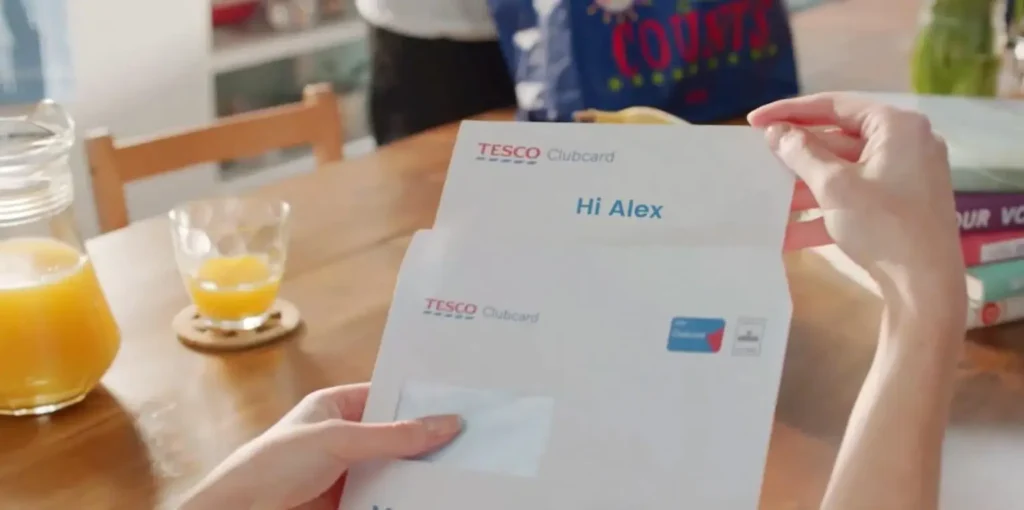In today’s fast-paced and constantly evolving business landscape, customer engagement has become more vital than ever before. It’s no longer enough to simply attract customers. Businesses must now find ways to actively involve them, fostering a relationship that goes beyond the initial purchase.
According to a report by Harvard Business Review Analytics Services, 92% of companies consider having effective customer engagement “extremely critical” or “very critical” to their organization’s success, with 88% agreeing that customer engagement has a significant impact on their organization’s bottom line.
But what exactly is customer engagement and why is it so essential?
Let’s talk about that. In this post, we’ll explore the impact that improving customer engagement has on ROI. We’ll also break down the challenges companies face in fostering engagement and cover the most effective strategies for increasing customer engagement.
How Customer Engagement Influences ROI
First, let’s define customer engagement. Think of customer engagement as the level of interaction between your customers and your brand. This can take many forms, from social media likes and comments to email open rates to in-person interactions. The key is that your customers are actively engaging with your brand rather than just being passive consumers.
So for example, if you own a coffee shop, your engaged customers aren’t just buying a latte and leaving. They’re also tagging your brand on social media, participating in loyalty programs and attending special events.
Why does this matter for your ROI?
Well, according to research, engaged customers are more likely to stick around and spend more money over time. In fact, Gallup reported that fully engaged customers represent a “23% premium in share of wallet, profitability, revenue and relationship growth compared with the average customer.”
Post on
But that’s not all. When your customers are engaged, they’re also more likely to refer your business to their friends and family, which can lead to even more revenue down the line. As Nielsen’s Trust in Advertising report found, 88% of consumers trust recommendations from people they know more than any other channel.
For instance, think about the last time a friend recommended a restaurant to you. Chances are, you were more inclined to try it based on their positive experience. This kind of word-of-mouth marketing is invaluable and can exponentially grow your customer base without any additional advertising spend.
Finally, through repeat customers and word-of-mouth referrals, customer engagement also helps reduce costs. When your customers are engaged, loyal and recommending you to others, you don’t need to spend as much to find and convert new customers. Instead, you can focus on customer retention, which has been found to be 7x less costly than acquiring new customers.
To sum it up, enhancing customer engagement is about building long-term relationships that drive sustained growth. By investing in customer engagement strategies, you’re creating a community of loyal customers who are more likely to purchase repeatedly, advocate for your brand and, ultimately, contribute to a higher ROI.
The Challenges of Customer Engagement
Despite its importance, many businesses continue to struggle with getting consumer engagement right. According to one survey, the top instances of annoying brand communication were when:
- The brand sends too many messages (56.2%)
- Their recommendations aren’t appropriate for me and my tastes (42.3%)
- The brand communicated with me through an undesirable channel (34.6%)
- The brand doesn’t acknowledge what I’ve already purchased (30.4%)
- The brand doesn’t include my information in their communications to me (23.7%)
Clearly, a big challenge when it comes to engaging with customers is producing relevant messages, content and experiences. Customers expect businesses to understand their individual needs and preferences and will often ignore brand messages that they find irrelevant.
Customers expect businesses to understand their individual needs and preferences and will often ignore brand messages that they find irrelevant. Imagine receiving incessant promotional emails for products that are completely irrelevant to your identity and lifestyle. Wouldn’t it quickly become a nuisance rather than a valuable interaction?
Another challenge is effectively engaging with customers on the right channels. Customers expect to be able to interact with businesses through various channels, such as social media, email and chatbots. However, managing an omnichannel customer engagement strategy can be difficult since each channel requires a unique approach.
Each channel requires a unique approach that caters to the specific expectations of those users. However, between adapting to the channel and maintaining a cohesive brand presence, managing an omnichannel customer engagement strategy can quickly get complicated.
To overcome these challenges, businesses need to adopt innovative solutions that allow them to engage with customers effectively. This includes leveraging technology and data to create personalized customer experiences.
Consider Netflix. The streaming giant rose to the top with its curated content recommendations based on each user’s viewing data. From the genres that show up on your home page to the alerts about a new season of your most-binged show, each interaction with the brand is personalized and relevant, keeping you engaged and coming back for more.
While it may seem daunting, plenty of brands across industries, from banking to travel and hospitality, have succeeded. By prioritizing customer insights and investing in engagement strategies, you too can build lasting relationships and enhance overall customer satisfaction. Let’s take a look at some examples for inspiration.
Customer Engagement Across Industries
While the importance of fostering engagement remains the same across industries, the strategies used vary.
In the retail industry, brands might use customer loyalty programs or personalized recommendations to keep customers coming back. These inspire emotional connections and a sense of exclusivity, with customers feeling valued when offered rewards or offers that cater to their individuality.
Take Nike, for example. With millions of engaged members across its digital ecosystem of workout and retail apps, rewards and memberships, the brand is able “to understand, engage and serve that consumer in a personalized way.” According to Nike’s president and CEO, their “direct connection with the consumer is the ‘liquid gold’ that’s driving higher profits.”
According to Nike’s president and CEO, their “direct connection with the consumer is the ‘liquid gold’ that’s driving higher profits.” By tailoring experiences and rewards based on individual preferences and behaviors, Nike not only encourages loyalty but also boosts customer lifetime value through continuous engagement.
Even traditionally “boring” industries like insurance or utilities can encourage greater consumer engagement. How? By providing exceptional customer service and personalized experiences that are valuable, memorable and interactive. From the onboarding process to routine communications to renewal notices, each touchpoint can be optimized to inspire engagement.
For instance, Zurich’s use of the Personalized Video above worked to transform the typical insurance renewal notice into a message that was relevant and engaging for each customer, encouraging retention and brand loyalty.
By highlighting the specific benefits and coverage relevant to the viewer, Zurich not only reinforces the value of its service but also shows appreciation to the customer.
Emphasizing value, especially during key touchpoints like renewals, is crucial. By showcasing how their product or service continues to meet changing needs, businesses reinforce their relevance and encourage customers to continue their relationship. This transforms routine interactions into meaningful engagements that resonate long after the initial transaction.
We have a case study about this very campaign if you’d like to learn more.
Similarly, utility companies can take inspiration from Oracle and its video message below. The communication encouraged customers to be more engaged with the brand and its services by providing personalized insights and recommendations for saving money and reducing their environmental impact.
By taking a customer-centric approach, these businesses were able to craft customer interactions and experiences that inspired interest and engagement from their target audience. In turn, customer engagement can help these industries stay relevant and competitive in an increasingly customer-centric world.
How To Increase Customer Engagement
Now that we understand the importance of customer engagement and what it can look like across various industries, let’s explore some effective strategies for increasing customer engagement.
From leveraging social media to personalizing your communications, these 4 tips will help you take your customer engagement to the next level.
1. Be Where Your Customers Are
When it comes to increasing customer engagement, a critical factor is meeting your audience where they are. This means understanding the channels and platforms your customers are using and leveraging those channels to connect with them.
Social media is one of the most popular channels for customer engagement today, especially for younger generations. Consider the stats below from recent research about how different generations use social media:
- 42% of Gen Z consumers find the most memorable brands on social media to be those that actively respond to their customers.
- 40% of millennials find that memorable brands prioritize original content over trending topics.
- 92% of Gen Xers use social media every day and are the fastest-growing generation on TikTok.
- 48% of baby boomers say social media enables them to interact with brands and companies online.
Platforms like Facebook, Instagram, Twitter, LinkedIn and increasingly TikTok offer brands unprecedented access to their target audiences. Here, businesses can not only connect with customers but also share valuable content and provide quick customer support.
Messaging apps are also an increasingly popular channel for customer engagement. In fact, inquiries over social messaging apps like WhatsApp and Facebook Messenger jumped 36% in 2022. This was higher than any other channel and underscores the growing preference for instant, 1:1 interactions.
By being present where your customers are active, you can create opportunities for meaningful interactions and build stronger relationships. For instance, you might use social media to share helpful resources and offer exclusive promotions to your followers or use messaging apps to provide real-time support and resolve customer issues.
Ultimately, a key part of effective customer engagement is understanding your audience and leveraging the channels they prefer. By meeting your customers where they are, whether that’s on social media, messaging apps or other platforms, businesses can build stronger, more meaningful relationships with their customers and drive long-term success.
2. Invest in Personalization
Personalization is another powerful way to increase customer engagement and build stronger relationships with your audience. According to McKinsey, 71% of consumers expect personalization — with 76% getting frustrated when they don’t find it.
To get started with personalization, businesses must first collect first-party customer data. This can include demographic information, purchase history and more. With this data in hand, those brands can start tailoring their marketing and outreach efforts to meet specific customer needs and preferences.
They can also humanize their message. It’s not just about making offers to a “segment” of customers. It’s about talking to the individual. After all, “hey, Janine” is a lot more personal than “hey, you” if you’re talking to a person, and when you’re talking to customers — well, they’re people.
There are quite a few effective strategies for using personalization to increase customer engagement.
For one, personalization can improve engagement with product or service recommendations and offers. Amazon is one brand that has mastered personalized recommendations. By analyzing customer data, the retailer suggests products that are similar to those that customers have purchased or shown interest in, helping to increase the likelihood of a purchase and build long-term loyalty.
Tip: Want to sweeten the recommendation or offer even more? Consider using different types of media — photos, videos, GIFs — to emphasize the benefits of your product or service. See how Celebrity Cruises leveraged video to make the personalized offer more enticing with clips of the gorgeous destination and accommodations.
You can also personalize routine communications with your customers, whether it’s a welcome message, a billing notice or a year in review. By tailoring messaging to individual customers, you create relevant and compelling communications that resonate with each recipient and encourage them to engage.
The below year in review is a prime example of how personalization can turn what could be a basic year-end thank-you message into a piece of content that’s fun to share and provides insights about the user.
As businesses delve deeper into personalization, it’s crucial to also prioritize consumer privacy and data security. Providing customers with control over their data and ensuring transparent policies are essential to building trust and meeting compliance requirements.
If you’re looking to get more into personalization, I recommend downloading our personalization do’s and don’ts cheat sheet. It has a checklist for everything you need to know to get started.
When done correctly, personalization can be a powerful way to increase customer engagement and build long-lasting relationships with your target audience. By showing customers that you understand and value them as individuals, you can foster deeper connections, improve customer loyalty and enhance the overall customer experience.
3. Create Valuable Content
Another great way to increase customer engagement is to create valuable content that resonates with your audience. Content marketing isn’t just pushing out promotional material — it’s about providing information, entertainment and value that keep your customers coming back for more.
Start by identifying the pain points and interests of your target audience. What questions are they asking? What problems are they facing? Use this information to create content that addresses these needs.
For example, Bethpage created this Personalized Video to get ahead of any confusion about the loan process. Doing so not only proactively addresses potential questions and complaints but also positions the brand as one that genuinely cares to optimize its customers’ experience.
Interactive content, such as quizzes, polls and surveys, can also significantly boost engagement. These encourage active participation from your audience, making them feel more involved with your brand.
Videos, in particular, are highly engaging and can convey information quickly and effectively. For instance, rather than a lengthy document, consider an interactive onboarding tutorial that lets users navigate to the chapters they’re interested in. Or how about a bill explainer video where they can click on different charges to learn more?
You can also encourage your viewers to explore new offerings. EE did just that with a choose-your-own-adventure style Interactive Video when it introduced its refreshed brand identity.
As viewers choose how they respond in different scenarios, they learn more about EE’s core offerings in the areas of “Home, Learn, Work and Game.” It’s a fun, hands-on way to put customers at the center of the brand’s narrative, emphasizing how the new EE is built with their needs in mind.
Remember that consistency is key in content marketing. Regularly update your content and keep it fresh. Posting new videos, articles and other forms of content keeps your audience engaged and coming back for more. You can also repurpose content across different platforms to reach a wider audience, allowing you to get a greater return out of each piece of collateral.
4. Leverage User-Generated Content
Brands can also boost the effectiveness of their customer engagement efforts by leveraging user-generated content (UGC). UGC refers to any content created by customers that showcases your brand. It could be reviews, social media posts, photos — almost anything.
UGC is a powerful tool for building trust and credibility with customers. One survey reported that customer-created content was deemed by consumers as the most authentic, particularly over brand-created and influencer content. Even more, it showed how much influence this type of content has on buying decisions and brand perception.
- 80% of consumers say UGC highly impacts their purchasing decisions.
- UGC is 8.7x more impactful than influencer content.
- UGC is 6.6x more influential than branded content.
Seeing a positive review or a photo of a real customer using a product can be far more convincing than a polished advertisement. By showing real experiences and opinions from fellow customers rather than just marketing messages from the brand itself, user-generated content helps build social proof and persuade potential customers to make a purchase.
UGC can also be an effective way to foster connections and encourage engagement among your existing customers. When customers see other people sharing their experiences with your brand, it can spark conversation and inspire them to get involved. This sense of community and connection can lead to increased engagement, loyalty and advocacy.
So how can businesses encourage UGC and use it to increase customer engagement?
One approach is to create marketing campaigns or initiatives that encourage customers to share their experiences. For example, you could create a hashtag and encourage customers to share photos or stories using that hashtag on social media.
A great example is the GoPro Awards, where users share their adventurous moments captured on GoPro cameras for a chance to win prizes. The campaign not only encourages a consistent stream of content for the brand (which works as proof of the quality of its products) but it also promotes a sense of community among customers.
Tip: Sometimes “encourage” means “bribe.” OK, well, not exactly, but at least “incentivize.” Adding a reward or perk makes it more likely that customers will engage with your UGC campaign.
The No. 1 rule for this kind of campaign is to make it easy for the customer to share their content. If you can start the creation process for them, all the better.
That’s what WW (WeightWatchers) did with the video below. They made a fun recap for every customer but then let customers make their own video by choosing what they wanted to include. It was a simple menu right in the player, and they could generate a new video on demand, making it fast and easy.
Once you have this user-generated content, what do you do with it? Promote social sharing, for starters (as mentioned above). But you can also feature it on your own channels, such as your website or social media. By showcasing content created by customers, businesses can foster engagement and encourage customers to remain loyal to their brand.
An effective UGC strategy helps businesses not only create engagement with consumers. It also lets them build a sense of community that can be a true differentiator among competitors.
Moreover, an effective UGC strategy can build a sense of community that can be a true differentiator among competitors. People love to belong to something greater than themselves, and this community-driven approach can
5. Tap Into the Power of Gamification
Gamification is an increasingly popular strategy for businesses looking to increase customer engagement.
Think about where gamification began — in the world of gaming. Gaming companies are constantly battling player attrition, but they also know how to reengage players and keep them coming back for more. By taking inspiration from gaming tactics, businesses can gamify their own customer journey, increase engagement and grow a base of loyal customers.
One common gamification strategy is the use of rewards. In gaming, players are often rewarded for their progress with in-game items or achievements. This same approach with incentives can be applied to customer engagement in other industries.
Loyalty programs that offer rewards or exclusive discounts to customers who make repeat purchases or refer friends are a popular way to do this. By offering incentives for engagement, businesses can build stronger relationships with their customers and encourage them to stay involved.
Another effective gamification technique is to celebrate your customers. Every win and milestone works to motivate individuals to keep striving for better results. Plus, performance stats that users can proudly share with their social circle bring an element of community that people crave. This is particularly relevant for aspirational industries like travel, education and, of course, gaming.
Gaming recaps, like the one from Call of Duty below, have led to impressive results including 10x higher engagement, 78% higher sales and a 5x uplift in social sharing.
But you can also apply this technique to other industries, such as retail, financial services or education. You could help customers boast about their financial investments, coupons clipped and much more. We like to think of it as empowering humblebragging.
It’s also a natural fit for wellness. Think of how fitness apps use gamification to keep you going.
Here’s an example we love from Orangetheory Fitness. The brand created a motivational Personalized Video for their members that recapped the classes they attended, points earned, calories burned and more throughout the year.
They even set the video to a custom soundtrack based on the BPM (beats per minute) of the member’s heart while working out. Pretty cool.
The possibilities are endless with gamification. Whatever your industry, leveling up the customer experience by adding elements of competition and achievement can do wonders for your engagement levels.
Unlocking Next-Level Customer Engagement
Having a successful customer engagement strategy is invaluable. By engaging with your customers and establishing an emotional connection, you can drive growth, increase retention and boost your bottom line. As you saw with the examples above, Personalized Video can take your engagement strategies to the next level.
Personalized and Interactive Video can be used to promote new products and services, deliver targeted offers and rewards and even provide exceptional customer service, making it a versatile and effective tool for engagement.
Here are just some of the results that our clients have seen from their customer engagement campaigns using data-driven video:
- 10x engagement
- 5x increase in social sharing
- 11x sales
- 27 points higher NPS
At Idomoo, we specialize in creating data-driven video solutions that drive measurable engagement. Want to see for yourself how powerful Personalized and Interactive Video can be? Reach out to us today for a demo to see how we can help you unlock the full potential of customer engagement.







